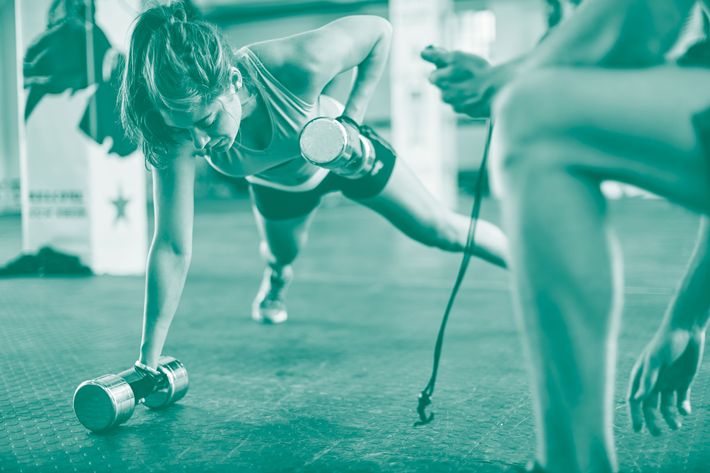
You probably don’t need to read another article extolling the virtues of regular exercise. If you, like the vast majority of people in the U.S., aren’t getting the CDC-recommended 1.5 hours of high-intensity aerobic exercise each week, it’s probably because you don’t have the time, or the energy, or because the other demands of life keep getting in the way — whatever the reason, it’s not because you somehow never realized that getting your heart rate up would be good for your health.
What’s discussed less often, though, is all the ways beyond simple fitness that high-intensity exercise — particularly interval workouts, or short bursts of intense activity — can change you for the better. That means physically, yes, but mentally, too. In fact, a growing body of research suggests that very vigorous exercise can help your brain as much as your body.
In a study published last year in the journal Neuroscience Letters, for example, a group of researchers from the University of Texas investigated the effects of high-intensity exercise on a protein called BDNF, short for brain-derived neurotrophic factor. BDNF is involved in brain-cell survival and repair, mood regulation, and cognitive functions such as learning and memory; low levels of BDNF have been associated with depression, bipolar disorder, and schizophrenia. In the study subjects, all healthy young adults, a session of high-intensity exercise was linked to both higher BDNF levels and improvements in cognitive functioning.
In a similar study, published in 2014 in the journal Perceptual and Motor Skills, a group of middle-aged volunteers ran through a battery of mental tests before and after a high-intensity exercise session — and these subjects, too, saw their cognitive function improve. Notably, there was no such improvement after a session of low-intensity active stretching.
Even the physical benefits of high-intensity interval training, or HIIT, go beyond the typical health improvements associated with normal exercise. HIIT may be the closest thing we’ve got to the fountain of youth: In research presented last month in the journal Cell Metabolism, a team of Mayo Clinic researchers suggested that it might help to reverse the cellular signs of aging.
Here’s how it works: As we age, our mitochondria — the “powerhouses” of the cell — stop functioning as well as they used to, leading to declines in energy level and exercise capacity. In the Mayo Clinic study, using groups of younger (18–30) and older (65–80) subjects, researchers measured the impact of three routines — high-intensity interval exercise, strength training, and a combined lower-intensity strength/cardiovascular program — on cell function, cardiovascular fitness, insulin sensitivity, and muscle mass.
At the end of the 12-week study period, the interval trainers showed improvements in circulation, heart function, and lung health. However, while the younger HIIT group experienced a 49 percent increase in mitochondrial capacity — a marker of the cell’s ability to produce energy —high-intensity exercise was the only routine that boosted mitochondrial function in the older group, by an incredible 69 percent. (The older group of high-intensity exercisers also showed an improvement in insulin sensitivity, a marker of diabetes risk.)
The biggest perk of high-intensity exercise, though, may be that it makes the whole workout thing more fun than your average treadmill slog. In part, that’s because it’s easier to get it over with: Earlier this year, a study published in the journal PLOS One found that people enjoyed HIIT workouts over more moderate activity “due to [their] time efficiency and constantly changing stimulus.”
Martin Gibala, a kinesiology professor at McMaster University who’s studied the effects of HIIT on heart health, believes that for many people, a longer, less strenuous workout is less appealing than a shorter blast of greater exertion. But that’s not to say you have to compensate for the lower time commitment by knocking yourself out: “If maximum effort isn’t your thing,” he says, “then you can give 90 percent or 80 percent. Basically, as long as you vary the intensity from steady-state, you’ll get a benefit.”
It’s advice that even the most sedentary of couch potatoes can follow — any exercise that comes with its own acronym can seem a little daunting, but HIIT isn’t just for spandex-clad athletes. The effects of high-intensity interval workouts have been studied in patients with Parkinson’s, coronary artery disease, and diabetes, as well as the elderly. In other words: If you’re reading this, you’re probably healthy enough to give it a shot.
No comments:
Post a Comment